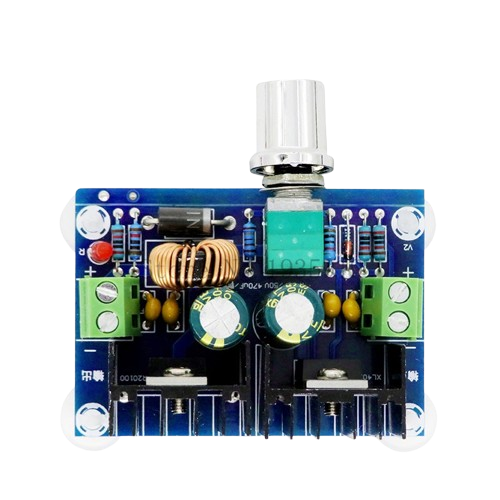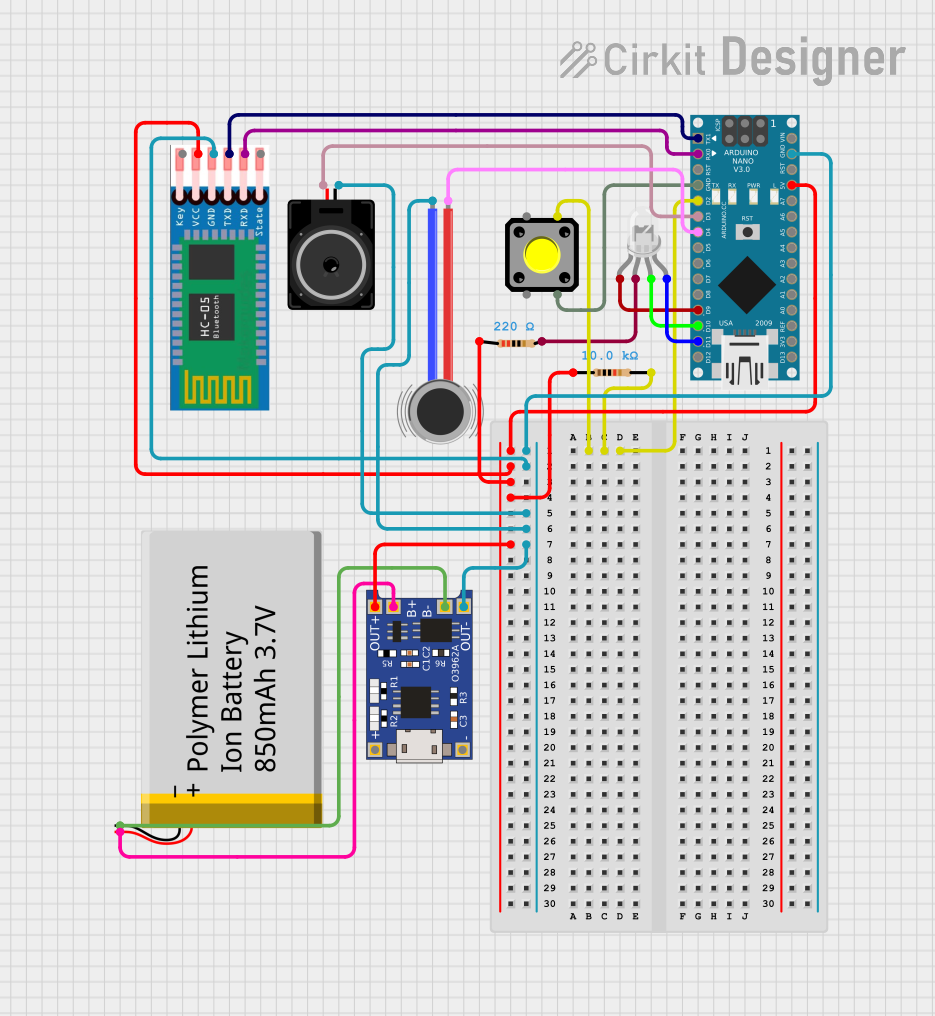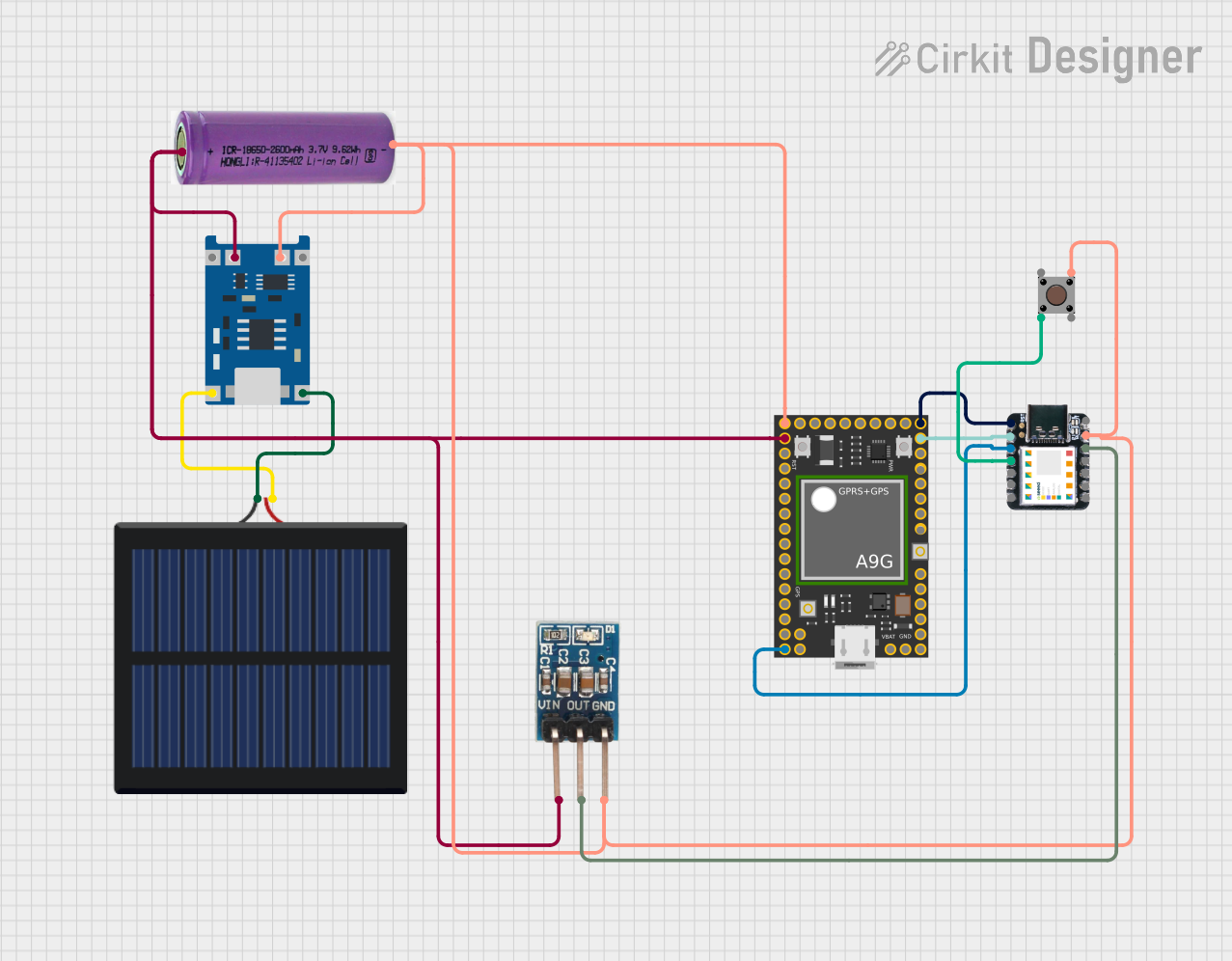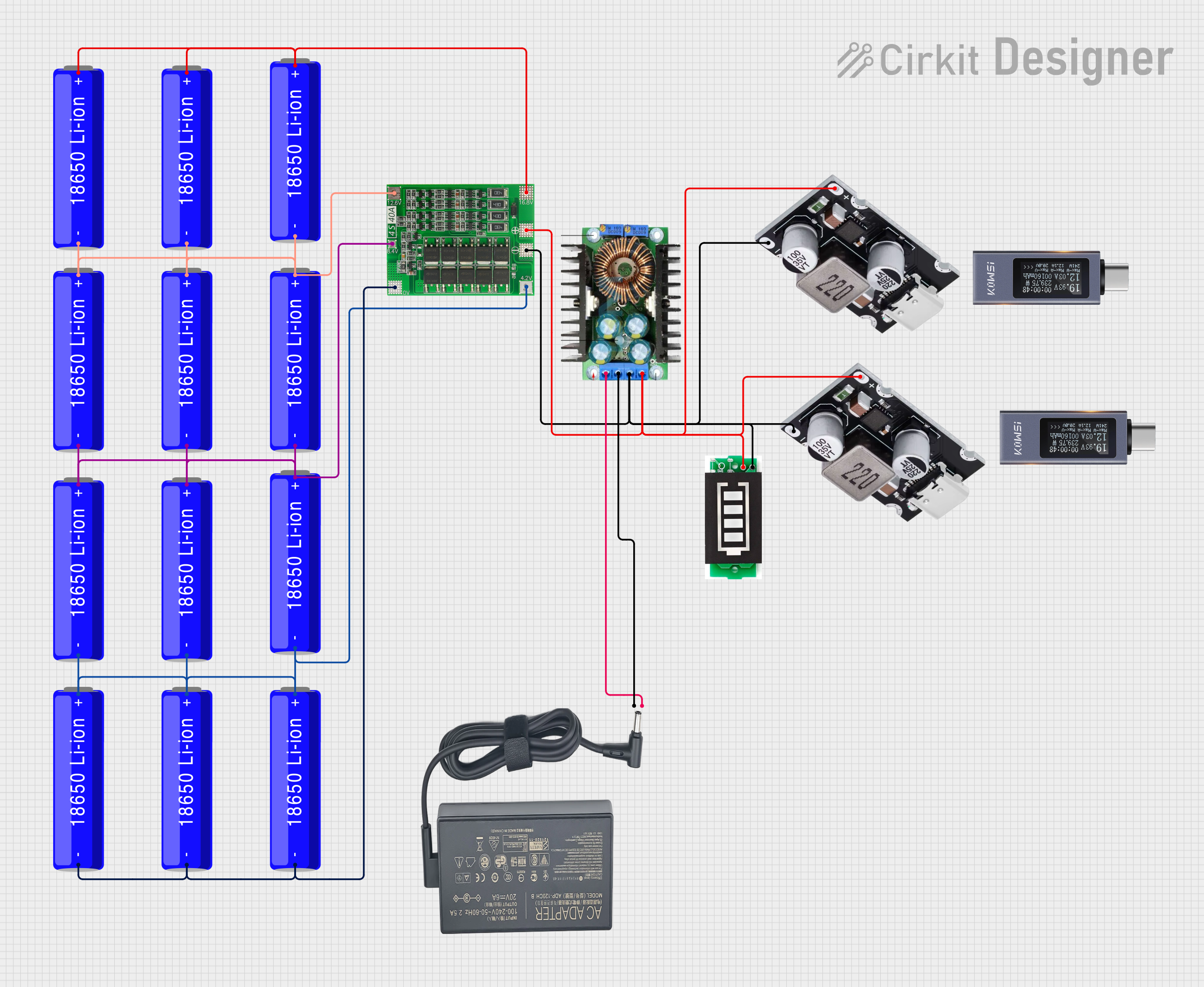
How to Use XH-M401: Examples, Pinouts, and Specs

 Design with XH-M401 in Cirkit Designer
Design with XH-M401 in Cirkit DesignerIntroduction
The XH-M401 is a DC-DC buck converter module designed to step down voltage from a higher input level to a lower, stable output voltage. This module is highly efficient and widely used in power supply circuits for various electronic applications. It is ideal for projects requiring a reliable and adjustable power source, such as powering microcontrollers, sensors, and other low-voltage devices.
Explore Projects Built with XH-M401

 Open Project in Cirkit Designer
Open Project in Cirkit Designer
 Open Project in Cirkit Designer
Open Project in Cirkit Designer
 Open Project in Cirkit Designer
Open Project in Cirkit Designer
 Open Project in Cirkit Designer
Open Project in Cirkit DesignerExplore Projects Built with XH-M401

 Open Project in Cirkit Designer
Open Project in Cirkit Designer
 Open Project in Cirkit Designer
Open Project in Cirkit Designer
 Open Project in Cirkit Designer
Open Project in Cirkit Designer
 Open Project in Cirkit Designer
Open Project in Cirkit DesignerCommon Applications and Use Cases
- Powering microcontrollers (e.g., Arduino, Raspberry Pi)
- Voltage regulation for battery-powered devices
- LED lighting systems
- DIY electronics projects
- Industrial automation systems
Technical Specifications
The XH-M401 module is built for efficiency and flexibility. Below are its key technical details:
| Parameter | Specification |
|---|---|
| Input Voltage Range | 4V to 38V DC |
| Output Voltage Range | 1.25V to 36V DC |
| Maximum Output Current | 5A (with proper heat dissipation) |
| Efficiency | Up to 96% |
| Switching Frequency | 180 kHz |
| Load Regulation | ±0.5% |
| Voltage Regulation | ±0.5% |
| Dimensions | 60mm x 30mm x 20mm |
Pin Configuration and Descriptions
The XH-M401 module has the following input and output terminals:
| Pin | Label | Description |
|---|---|---|
| 1 | VIN+ | Positive input voltage terminal (4V to 38V DC) |
| 2 | VIN- | Negative input voltage terminal (ground) |
| 3 | VOUT+ | Positive output voltage terminal (1.25V to 36V DC) |
| 4 | VOUT- | Negative output voltage terminal (ground) |
Usage Instructions
How to Use the XH-M401 in a Circuit
Connect the Input Voltage:
- Connect the positive terminal of your power source to the
VIN+pin. - Connect the negative terminal of your power source to the
VIN-pin.
- Connect the positive terminal of your power source to the
Connect the Output Load:
- Connect the positive terminal of your load to the
VOUT+pin. - Connect the negative terminal of your load to the
VOUT-pin.
- Connect the positive terminal of your load to the
Adjust the Output Voltage:
- Use the onboard potentiometer to adjust the output voltage.
- Turn the potentiometer clockwise to increase the output voltage and counterclockwise to decrease it.
- Use a multimeter to measure the output voltage for precise adjustment.
Ensure Proper Heat Dissipation:
- If the output current exceeds 2A, attach a heatsink to the module to prevent overheating.
Important Considerations and Best Practices
- Input Voltage: Ensure the input voltage is at least 1.5V higher than the desired output voltage.
- Current Limit: Do not exceed the maximum output current of 5A. Use a heatsink for currents above 2A.
- Polarity: Double-check the polarity of the input and output connections to avoid damage.
- Load Testing: Test the module with a small load before connecting it to sensitive devices.
Example: Using the XH-M401 with an Arduino UNO
The XH-M401 can be used to power an Arduino UNO by stepping down a 12V input to 5V. Below is an example circuit and Arduino code:
Circuit Setup
- Connect a 12V DC power source to the
VIN+andVIN-pins of the XH-M401. - Adjust the output voltage to 5V using the potentiometer.
- Connect the
VOUT+pin to the Arduino's 5V pin and theVOUT-pin to the Arduino's GND pin.
Arduino Code Example
// Example code to blink an LED using an Arduino UNO powered by the XH-M401
// Ensure the XH-M401 output is set to 5V before connecting to the Arduino.
const int ledPin = 13; // Built-in LED pin on the Arduino UNO
void setup() {
pinMode(ledPin, OUTPUT); // Set the LED pin as an output
}
void loop() {
digitalWrite(ledPin, HIGH); // Turn the LED on
delay(1000); // Wait for 1 second
digitalWrite(ledPin, LOW); // Turn the LED off
delay(1000); // Wait for 1 second
}
Troubleshooting and FAQs
Common Issues and Solutions
No Output Voltage:
- Check the input voltage and ensure it is within the specified range (4V to 38V).
- Verify the polarity of the input and output connections.
- Ensure the potentiometer is not turned all the way down.
Overheating:
- Attach a heatsink if the output current exceeds 2A.
- Reduce the load current if possible.
Fluctuating Output Voltage:
- Ensure the input voltage is stable and not dropping under load.
- Check for loose connections or damaged wires.
Module Not Working:
- Inspect the module for visible damage or burnt components.
- Verify that the input voltage is at least 1.5V higher than the desired output voltage.
FAQs
Q: Can the XH-M401 be used to charge batteries?
A: Yes, but ensure the output voltage is set to the appropriate charging voltage for the battery type. Use additional circuitry for current limiting if required.
Q: What is the maximum power output of the XH-M401?
A: The maximum power output is approximately 180W (36V × 5A), but this requires proper heat dissipation.
Q: Can I use the XH-M401 with an AC power source?
A: No, the XH-M401 is designed for DC input only. Use a rectifier and filter circuit to convert AC to DC before using the module.
Q: How do I know if the module is overheating?
A: If the module becomes too hot to touch or the output voltage becomes unstable, it is likely overheating. Use a heatsink or reduce the load.
By following this documentation, you can effectively use the XH-M401 DC-DC buck converter module in your projects.